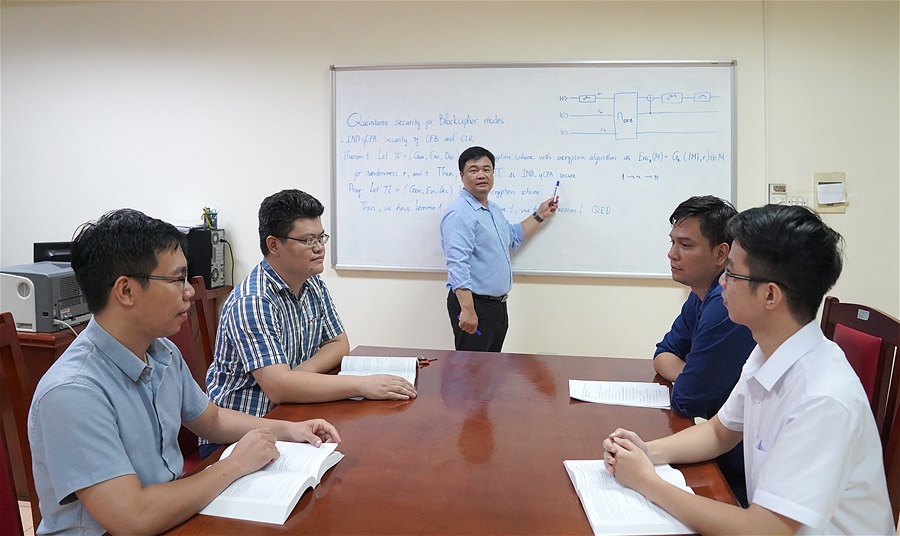Một số kết quả về tính giả ngẫu nhiên và siêu giả ngẫu nhiên của cấu trúc Feistel
Abstract- Block cipher constructions play an important role in designing a secured block cipher algorithm. Pseudorandomness and super-pseudorandomness of a block cipher construction has been attracting universal interests of the cryptographic communication. In this paper, we present some theoretic results that related in evaluating the pseudorandomness and super-pseudorandomness of the Feistel structure (which is a frequent used structure beside SPN, ARX…) by using the H coefficient technique proposed by J. Patarin.
|
Tài liệu tham khảo [1]. Luby M. , Rackoff C., “How to construct pseudorandom permutations from pseudorandom functions”, SIAM Journal on Computing. 17 (2), pp. 373-386, 1988. [2]. Patarin J., “The “coefficients H” technique”, Selected Areas in Cryptography, Springer, pp. 328-345, 2008. [3]. Gilbert H., Minier M., “New results on the pseudorandomness of some blockcipher constructions”, Fast Software Encryption, Springer, pp. 248-266, 2001. [4]. Piret G.-F., “Block ciphers: security proofs, cryptanalysis, design, and fault attacks”, UCL, 2005. [5]. Patarin J., “Pseudorandom permutations based on the DES scheme”, EUROCODE'90, Springer, pp. 193-204, 1991. [6]. Goldwasser S., Bellare M., “Lecture notes on cryptography”, Summer course Cryptography and computer security at MIT. 1999, pp. 1999, 1996. [7]. Patarin J., “Security of random Feistel schemes with 5 or more rounds”, Advances in Cryptology–CRYPTO 2004, Springer, pp. 106-122, 2004. [8]. Patarin J., “About Feistel schemes with six (or more) rounds”, Fast Software Encryption, Springer, pp. 103-121, 1998. [9]. Patarin J., “Luby-Rackoff: 7 rounds are enough for 2n(1-ε) security”, Advances in Cryptology-CRYPTO 2003, Springer, pp. 513-529, 2003. |
Nguyễn Bùi Cương, Hoàng Đình Linh




















